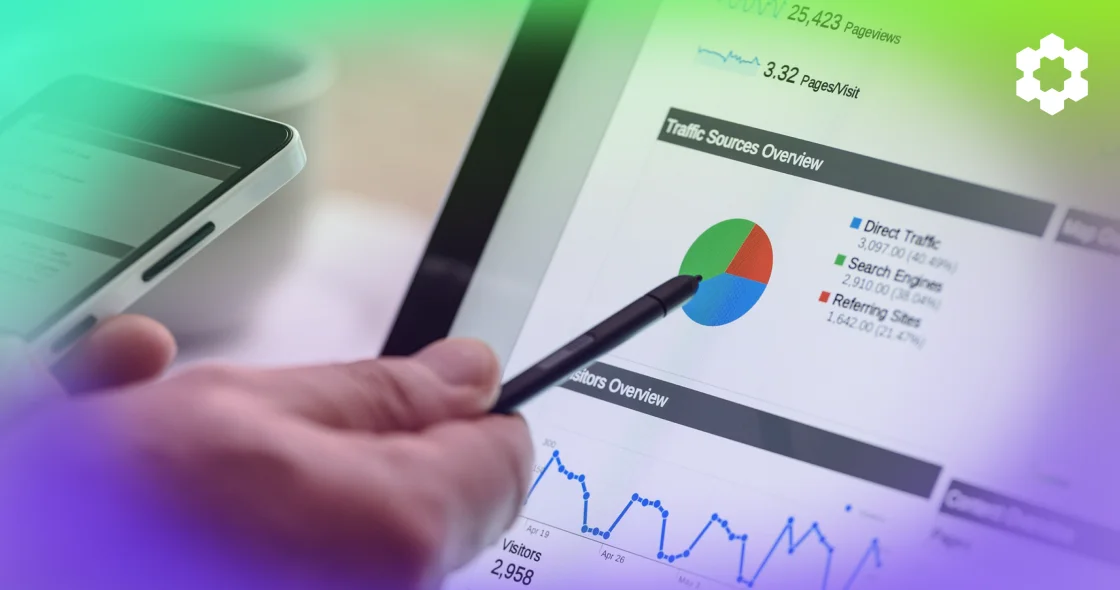In Part 1 of our comprehensive guide on How to Rank Organically on Amazon in 2024, we delved deep into the fundamentals of organic ranking, shedding light on its significance and the critical factors influencing it.
We also explored essential strategies for optimizing your product listings, including crafting compelling titles, descriptions, and leveraging relevant keywords to enhance visibility.
Now, in Part 2, we shift our focus to the importance of these two Amazon marketing tactics in driving more sales – external traffic and paid campaigns.
We’ll uncover the strategies for building backlinks, promoting listings on social media platforms, and integrating paid traffic. By understanding how to combine the strengths of paid and organic marketing efforts to improve Amazon ranking, you can unlock the full potential of your online presence and drive sustainable success in the cut-throat marketplace.
Why External Traffic Matters
Amazon external traffic refers to visitors directed to Amazon product listings from sources outside of the Amazon platform, such as search engines, social media platforms, email marketing, influencer collaborations, and backlinks from websites.
This metric is crucial for Amazon sellers as it not only drives potential customers directly to their product pages but also signals to Amazon’s algorithm that their listings are relevant and popular, thereby positively impacting their rankings in Amazon search results.
5 Key External Traffic Sources
1. Search Engines
Traffic from search engines like Google can significantly boost Amazon rankings as it indicates high relevance and authority. When potential customers discover Amazon product listings through search engine results pages (SERPs), it indicates to Amazon that the product is relevant to the search query and likely to meet the customer’s needs.
Here’s how search engine traffic helps boost ranking:
- Authority Building: Search engine traffic contributes to building the authority of Amazon product listings. As more users discover and click on the listing through SERPs, it establishes credibility and authority for the product, which can positively impact its ranking on Amazon.
- Increased Sales: Higher visibility on SERPs can drive more organic traffic to Amazon listings, resulting in increased sales. Amazon’s algorithm takes into account sales velocity as a factor in ranking, so increased sales resulting from search engine traffic can lead to improved ranking over time.
- Keyword Optimization: Traffic from search engines provides valuable insights into the keywords and search terms that are driving customers to Amazon listings. You can use this data to optimize your product listings for relevant keywords, further enhancing your visibility and ranking on Amazon.
According to industry studies, search engine traffic can lead to a major bump in sales for Amazon sellers. Some sellers report up to a 30% sales boost after optimizing their listings for search engine visibility. Additionally, products that rank on the first page of Google search results for relevant keywords tend to perform better on Amazon, indicating the importance of search engine traffic for improving ranking and sales performance.
Leveraging data and analytics on customer search behavior can be a game-changer when it comes to optimizing for search visibility. Tools like ManageByStats, D8aDriven, and SellerTools offer invaluable insights into target keywords based on real-time data on evolving customer search trends, product demand, and more.
2. Social Media Platforms
Traffic from these social sites such as Facebook, Instagram, TikTok, and Pinterest plays a crucial role in boosting your Amazon ranking by increasing visibility, driving external traffic, and enhancing brand credibility.When sharing your Amazon listings on these sites, you’re expanding your reach to a wider audience beyond Amazon.com. This exposure can lead to more clicks, views, and ultimately sales. This, in turn, indicates to Amazon’s algorithm that your product is popular, resulting in a positive influence on its ranking.
Moreover, social media engagement such as likes, shares, and comments can contribute to building brand authority and trust, further influencing Amazon’s ranking algorithm. According to research, 54% of online shoppers worldwide use social media to research products before making a purchase and 71% are more likely to buy products and services based on social media referrals. These studies highlight the significance of social media traffic in driving sales and improving Amazon ranking.
Maximize the profitability of your off-Amazon campaigns through PixelMe. Using high-value keyword optimization and AI-driven technology, PixelMe boosts conversions and enhances return on ad spend. What’s more, seamlessly connect to Amazon Attribution for potential referral bonuses, ensuring your campaigns become self-sustaining investments. Get started today with a free ASIN audit!
3. Backlinks
Backlinks from reputable websites indicate credibility and authority, positively influencing Amazon rankings. Building quality backlinks through guest blogging, partnerships, and collaborations can improve product visibility and organic ranking.Additionally, backlinks can drive direct referral traffic to the Amazon listing, increasing exposure and potential sales. According to Backlinko, websites with a higher number of quality backlinks tend to rank higher in search engine results pages. Research indicates that the top-ranking result on Google typically possesses approximately 3.8 times more backlinks compared to pages ranking in positions #2 to #10.
So, by actively building backlinks from authoritative sources, you can improve your organic ranking and visibility on the platform.
4. Email Marketing
While email marketing itself may not directly impact Amazon’s search algorithm, the increase in traffic and sales resulting from email campaigns can help improve organic ranking.
A study by Data & Marketing Association (DMA) shows that email marketing drives the highest return on investment (ROI) compared to other marketing channels, with an average ROI of £42 for every £1 spent. By leveraging email marketing to promote Amazon listings, you can increase visibility, generate more sales, and ultimately improve your organic ranking on the platform.
5. Influencer Collaborations
Partnering with influencers in relevant niches can showcase your products to their followers, driving traffic to Amazon listings.
Influencers’ endorsements and recommendations can introduce products to new audiences, leading to increased traffic and conversions. According to Influencer Marketing Hub, businesses earn an average of $5.78 for every $1 spent on influencer marketing, showcasing its effectiveness in driving ROI. Additionally, influencer content often generates user-generated content (UGC) such as reviews and social media mentions, which can further enhance product visibility and organic ranking on Amazon.
Overall, each of these external traffic sources contributes to increased visibility, higher sales, and improved rankings on Amazon. According to research, external traffic can lead to a significant boost in sales, with some sellers, Beardbrand in particular, reporting up to a 50% increase in revenue through external marketing efforts.
How To Drive External Traffic To Amazon Listing

By leveraging external channels such as social media, search engines, and email marketing, you can reach a broader audience beyond the confines of the Amazon platform. This not only expands brand awareness but also provides greater control over your Amazon marketing tactics and strategies, thereby reducing dependence on Amazon’s algorithms.
Diversifying traffic sources mitigates platform risks and lays the groundwork for long-term business growth and sustainability. Ultimately, mastering external traffic strategies empowers you to build a stronger brand presence, drive consistent revenue, and future-proof your ecommerce ventures.
Here are some expert tips on driving external traffic to your Amazon listing.
Utilize Social Media Platforms
Leverage the power of social media platforms to promote your Amazon listings. Here are some strategies:
- Share engaging content: Develop visually appealing and informative content related to your products. Use high-quality images, videos, and compelling captions to grab the audience’s attention.
- Run targeted ads: Consider running paid advertising campaigns on social media platforms to target specific demographics and reach potential customers. Platforms like Facebook Ads and Instagram Ads offer robust targeting options for optimizing ad performance.
- Cross-promotion: Share links to your Amazon listings across different social media platforms and channels. Cross-promotion can help drive traffic from various sources and increase your overall online presence.
- Interact with your audience: Organize contests or giveaways on social media to incentivize engagement and increase brand awareness. Encourage participants to visit your Amazon listings for a chance to win prizes.
Influencer Marketing
Collaborate with influencers in your niche to promote your products to their followers. Choose influencers whose audience aligns with your target market for maximum impact.
Paid Advertising
Consider investing in paid advertising channels like Google Ads or Facebook Ads to target potential customers outside of Amazon. Direct these ads to your Amazon listings to increase visibility and drive external traffic.
Collaborate with Blogs and Websites
Partner with relevant blogs, websites, or online publications to feature your products in sponsored posts, reviews, or gift guides. This can help expose your products to new audiences and drive traffic to your Amazon listings. Consider:
- Identifying relevant sites: Research blogs and websites that cater to your target audience and align with your product niche. Look for platforms with engaged audiences and a strong online presence.
- Offering valuable content or resources: Reach out to bloggers and website owners with a proposition to provide valuable content or resources related to your products. This could include guest blog posts, product reviews, or sponsored content that offers insights or solutions relevant to their audience.
- Negotiating Affiliate Partnerships: Explore affiliate marketing partnerships with bloggers and website owners where they earn a commission for driving sales to your Amazon listings through unique tracking links. This incentivizes them to promote your products and can result in a mutually beneficial relationship.
Offer Exclusive Promotions
Run exclusive promotions or discounts for customers who visit your Amazon listings through external channels like blogsites. This incentivizes external traffic and encourages potential customers to make a purchase.
Email Marketing
Build an email list of interested customers and regularly send out newsletters or promotional emails featuring your Amazon listings. Offer exclusive deals or discounts to incentivize clicks and purchases.
Content Marketing
Create valuable content such as blog posts, videos, or guides related to your products or niche. Optimize this content for relevant keywords and include links to your Amazon listings to drive traffic from search engines.
Optimize Landing Pages
Ensure that the landing pages you direct external traffic to are optimized for conversions. Use clear and compelling messaging, high-quality images, and persuasive calls-to-action to encourage visitors to purchase your products.
Paid and Organic Traffic Integration as an Amazon Marketing Tactic

The relationship between paid and organic traffic on Amazon is interconnected and can have a significant impact on your overall success. Paid marketing campaigns, such as Amazon Sponsored Products and Sponsored Brands, can complement organic traffic by driving additional visibility and sales to listings.
When used strategically, paid campaigns can also indirectly influence organic ranking by boosting key performance metrics that Amazon’s algorithm considers when determining search result placement.
One way paid campaigns can improve organic ranking is by increasing sales velocity and conversion rates. Amazon’s algorithm rewards products that consistently generate sales by ranking them higher in search results. Paid campaigns can drive traffic to listings, resulting in more sales and improved organic ranking over time.
Moreover, paid campaigns can help increase product visibility and exposure, leading to more clicks and organic traffic. When users engage with sponsored listings and subsequently make purchases, it sends positive signals to Amazon’s algorithm, indicating relevance and popularity. This can result in improved organic ranking for the advertised products.
Additionally, paid campaigns provide valuable insights and data that sellers can use to optimize their listings for better organic performance. By analyzing campaign metrics such as click-through rate (CTR), conversion rate, and keyword performance, you can identify high-performing keywords and trends to incorporate into your organic Amazon marketing strategy.
To leverage paid campaigns effectively to improve organic ranking on Amazon, you should:
- Target relevant keywords: Use targeted keywords in paid campaigns to attract the right audience and drive traffic to listings. Optimize product titles, bullet points, and descriptions with these keywords to improve organic visibility.
- Optimize product listings: Ensure product listings are optimized for conversion by providing clear and compelling product information, high-quality images, and competitive pricing. A well-optimized listing can improve both paid and organic performance.
If you’re feeling unsure about how to kickstart your Amazon listing optimization journey, consider grabbing the free Chrome extension offered by SellerTools. This tool conducts a thorough review of your listing and generates a Listing Quality Score (LQS), pinpointing areas that may require enhancement.
- Monitor campaign performance: Regularly monitor campaign performance metrics to identify areas for improvement and optimization. Adjust bids, targeting, and ad creative based on performance data to maximize ROI and organic impact. Consider boosting your business with data-driven insights and actionable plans tailored to your needs. Amazon PPC automation software like PPC Entourage and D8aDriven can aid you in fostering growth with automated reports, predictive analysis, and practical recommendations crafted to propel you forward and maintain your competitive edge.
- Test and iterate: Continuously test different campaign strategies, keywords, and ad formats to identify what works best for driving both paid and organic traffic. Use A/B testing and experimentation to refine tactics and improve overall performance over time.
By understanding the relationship between paid vs organic marketing and implementing strategic paid campaigns, you can effectively improve your organic ranking on Amazon and drive long-term ecommerce success.
Expanding Your Reach with Off-Amazon Channels
Mastering external traffic sources and integrating paid campaigns into your Amazon marketing strategy are essential for driving sales and improving organic ranking on the platform.
By leveraging key Amazon marketing tactics such as building backlinks, promoting listings on social media, collaborating with influencers, and investing in paid advertising, you can expand your reach, increase visibility, and drive more traffic to your Amazon listings.
In addition, integrating paid campaigns strategically can indirectly influence organic ranking by boosting key performance metrics and providing valuable insights for optimizing listings. To simplify the implementation of these tactics and drive growth effectively, use off-Amazon advertising platforms like PixelMe and ad management tool like D8aDriven.
Stay tuned for Part 3 of our blog series, where we’ll dive into mastering PPC to further enhance your Amazon ranking and sales performance.








